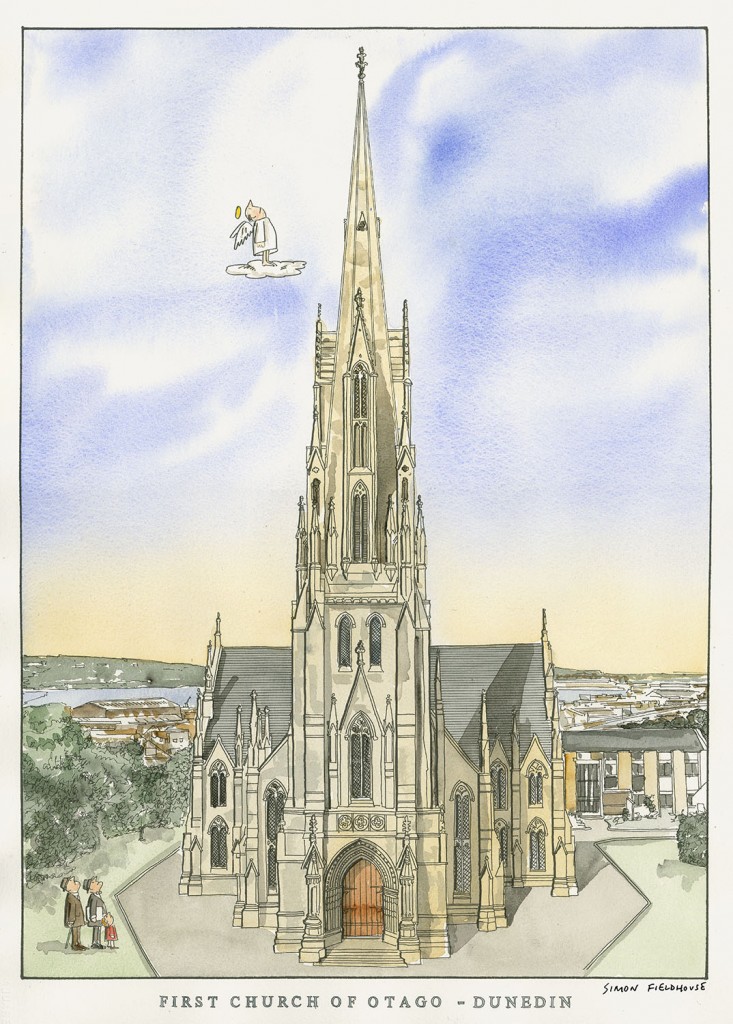
First Church of Otago Dunedin
First Church of Otago Dunedin. The first major wave of settlement of Otago by Pakeha occurred in the nineteenth century under the auspices of the Free Church of Scotland. In 1843 approximately one third of Scottish Presbyterians broke away from the Established Church of Scotland to form the Free Church of Scotland. This split occurred over the issue of who had the right to appoint ministers. Those who split from the Established Church believed that the choice of a minister should reside with the congregation, rather than with the wealthy local landowners. The Free Church became interested in the colonisation scheme of Otago, as promoted by George Reenie in 1842. This scheme was based on Edward Gibbon Wakefield's ideas of systematic colonisation, tempered by the experiences of the earlier colonies in Wellington (1840), Wanganui (1840), New Plymouth (1841), and Nelson (1842). Rennie argued that what was needed to make such a settlement successful was the thorough preparation of the settlement before the settlers arrived. It was also thought that a more 'socially homogeneous' group would have fewer problems. Thus the Otago settlement aimed to have a concentrated group of Scottish farmers, bonded by religious beliefs. While Dunedin was planned as a Free Church settlement, with both school and community to be controlled by the church, in reality the group of 350 settlers who set sail for Otago in 1847 was more disparate in religion and ethnicity than the organisers had desired. Despite this diversity, subsequent immigration meant that by the late 1850s the Scottish Presbyterians were dominant and the Free Church played a prominent role in the Dunedin settlement. By 1857 sufficient money had been raised by the Free Church congregation for them to erect a church in permanent materials that would seat 500. However, no tenders were received for a church design proposed by W.H. Monson and the idea of a new church lapsed until 1861. In January 1862 an architectural competition to design a new church for the Otago settlement was announced. The competition was won by R. A. Lawson (1833-1902), a young architect resident in Melbourne, Australia. He sent over six drawings under the pseudonym of 'Presbyter'. Lawson, a Scotsman himself, had trained as an architect in Perth and Edinburgh before immigrating to Australia in 1854. After winning the Otago competition Lawson moved to Dunedin and found the Provincial Council in the process of demolishing the hill which was to be the site of the church, Reserve 4, now known as Bell Hill. Bell Hill had proved to be a major physical obstruction for the Dunedin settlement, cutting the township in two as it was too steep for wheeled vehicles to cross. The Provincial Council had eventually decided to remove it in order to provide further flat land for businesses, the growth in which was directly attributed to the goldrushes of the early 1860s. Lawson suggested that a flat platform be left for the church site, above the level of the planned excavation and this was agreed. (Because the excavation took so long the Provincial Government financed the building of a temporary wooden church in 1864 which served the congregation until 1873.) .